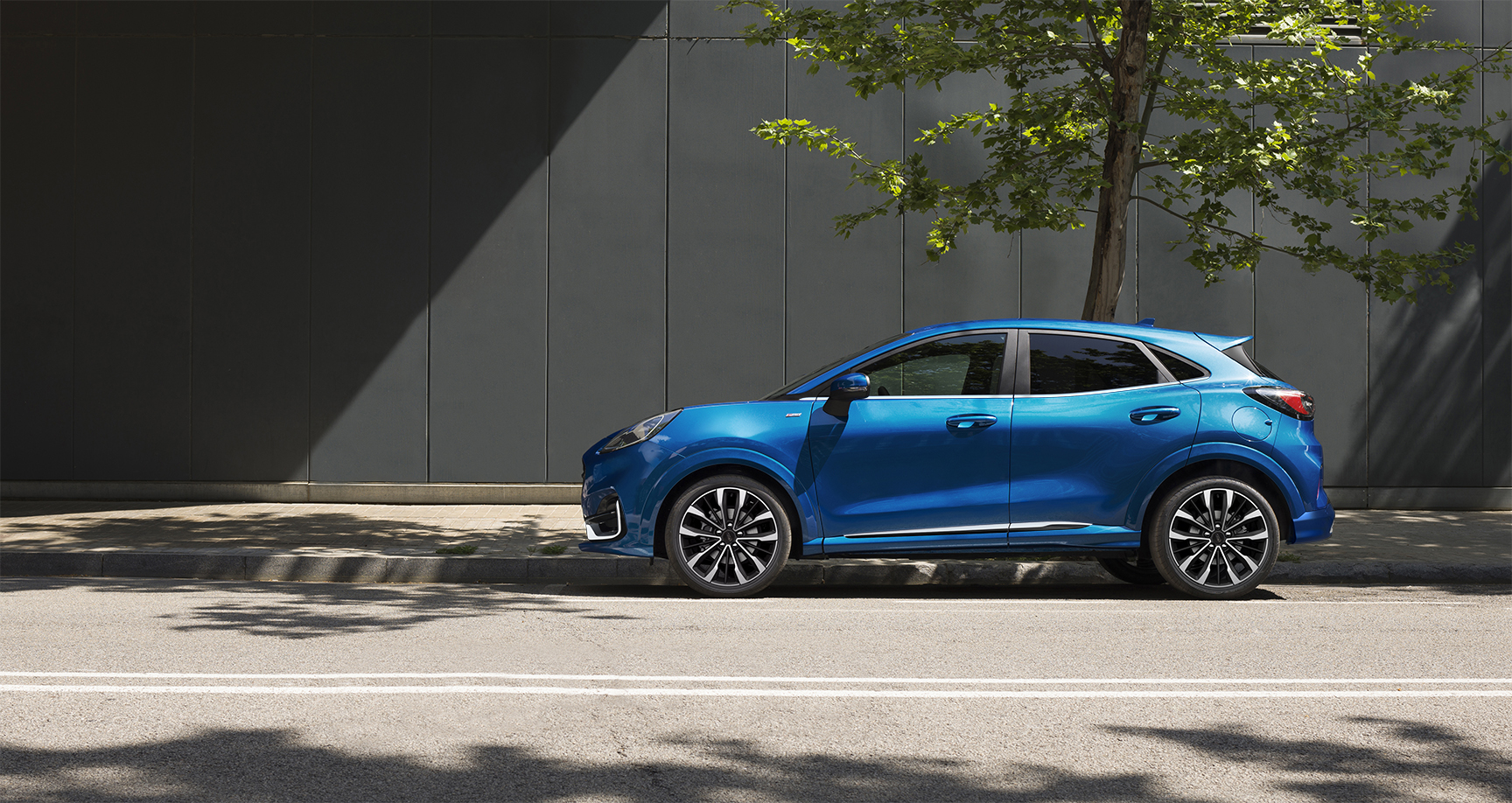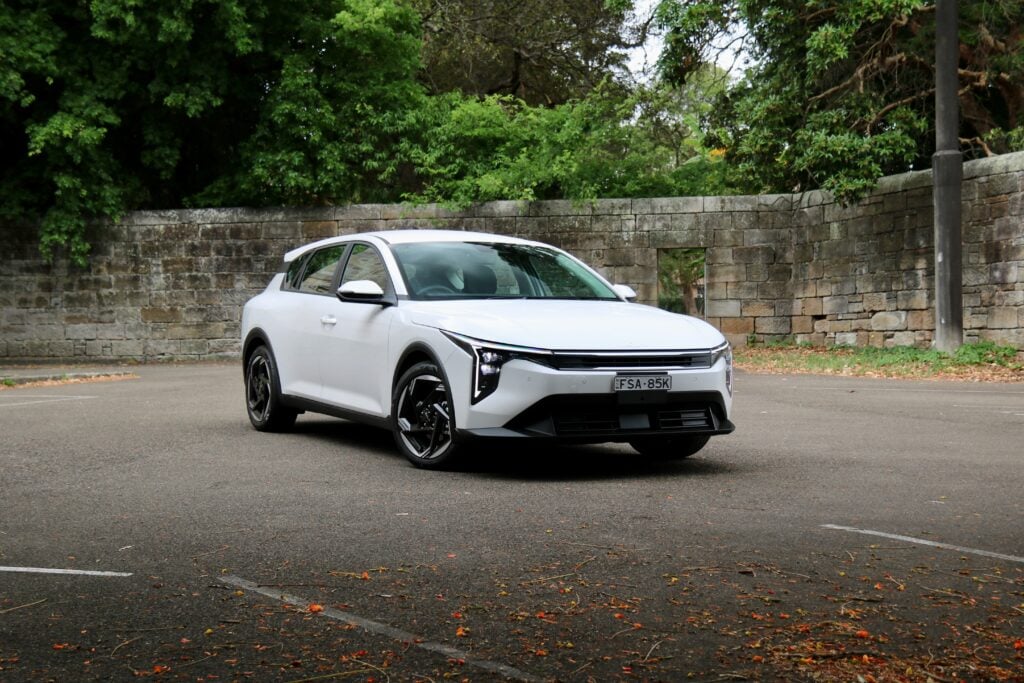Score breakdown
Things we like
- Packed with goodies
- Playful dynamics
- Fuel consumption
Not so much
- Ride errs on the firm side
- Second-row ambience
- Expensive compared to rivals
The Ford Puma is not short of competition. In fact, in the compact SUV segment – dominated by the Mazda CX-3 – the Puma is outgunned by most rivals when it comes to sales.
But is that fuelled by memories of an underwhelming Ford EcoSport, the Puma’s market predecessor? Or is it a case of the Puma only appealing to a small number of buyers?
It’s one of many relative newcomers to the market, including the Toyota Yaris Cross, Hyundai Venue, and the Kia Stonic, and it’s got something to prove. We’re looking at the top-spec Puma, the ST-Line V, which is still one of the cheapest ways to get behind a Blue Oval, but starts to look rather pricey compared to its competition.
For its $35,540 asking price (before on-roads), the Puma ST-Line V comes packed with standard features, including: a 12-inch dash cluster screen, a hands-free power tailgate, Bang & Olufsen 10-speaker sound system with subwoofer, keyless entry, plus a wireless phone charger. It also comes with 18-inch alloys, leather accented seats, tinted privacy glass, and scuff plates with the ST-Line logo.
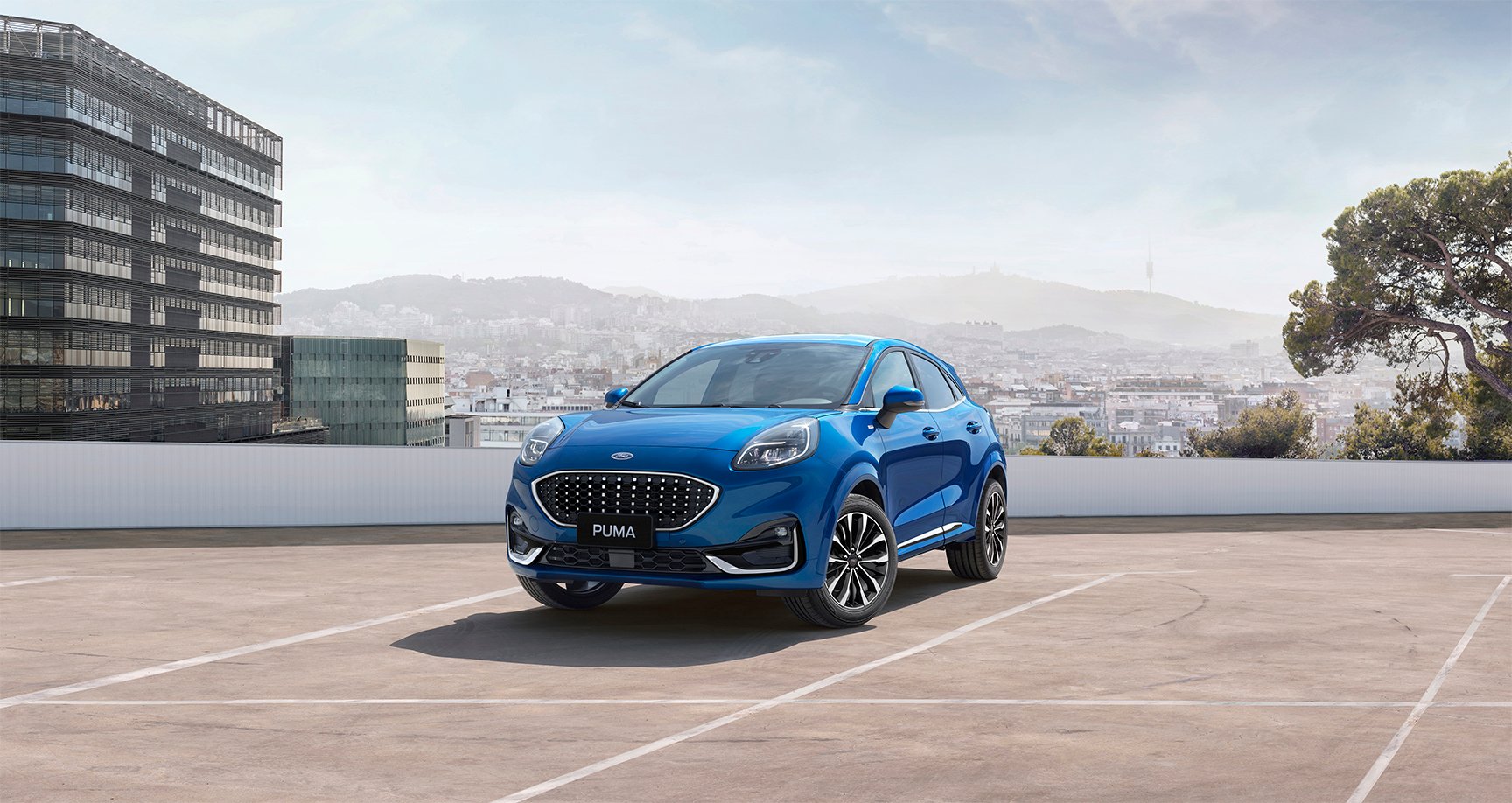
It’s an impressive list and, if you’re looking for bells and whistles, justifies the pricing for the ST-Line V. Much of this is either unavailable or optional in rivals – the similarly priced CX-3 Akari doesn’t get wireless phone charging or power tailgate at all, and even the scuff plates are an option.
Ford’s five year/ unlimited kilometre warranty is also included, and Ford quotes $320 or $370 for most of its annual (or at 15,000km interval) servicing aside from a more expensive 60,000km and 120,000 service, $560.
All three versions of the Puma come with the same drivetrain – a turbo 1.0-litre three-pot with 92kW and 170Nm mated to a 7-speed dual-clutch – and both ST-Lines have sports suspension, which is an important distinction we’ll get to later.
The safety suite remains the same across each trim level in the Puma range, meaning: regular driver and passenger airbags, front side and rear side curtain bags, ABS, seatbelt reminders, a driver attention monitor, ESC, emergency brake assist, forward collision alert, lane keeping, and departure warning.
You need to spend extra for the optional ‘Park Pack’ to get adaptive cruise, lane centring, blind spot monitoring, and evasive steer assistance.
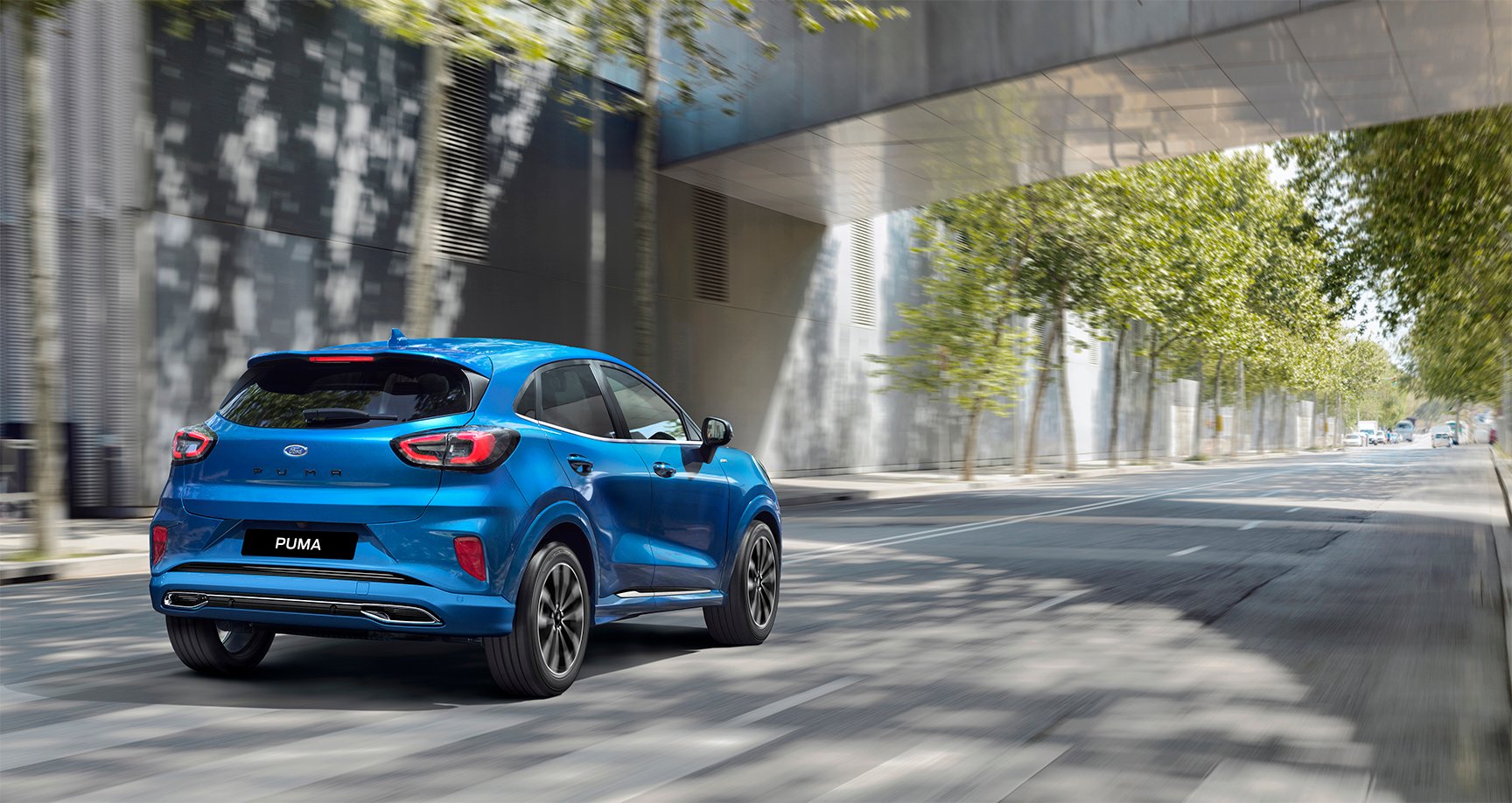
Even in top-spec trim, the Puma ST-Line V is one of the cheapest ways to get behind a Blue Oval, but starts to look rather pricey compared to its competition.
The Puma gets a five star crash rating from ANCAP, with high marks for occupant protection (94 per cent scored for adults, 86 per cent for child occupant protection) but slightly lower scores for pedestrian safety and driver assistance (77 and 74 per cent respectively).
These scores are fairly in line with other compact SUVs across many price points, with the Puma being pretty much lineball with the likes of the Nissan Juke and more expensive Mercedes-Benz GLB, both of which were tested around the same time.
So, on paper, the Puma ST-Line V ticks plenty of boxes, but what’s it like to actually be in, live with, and drive?
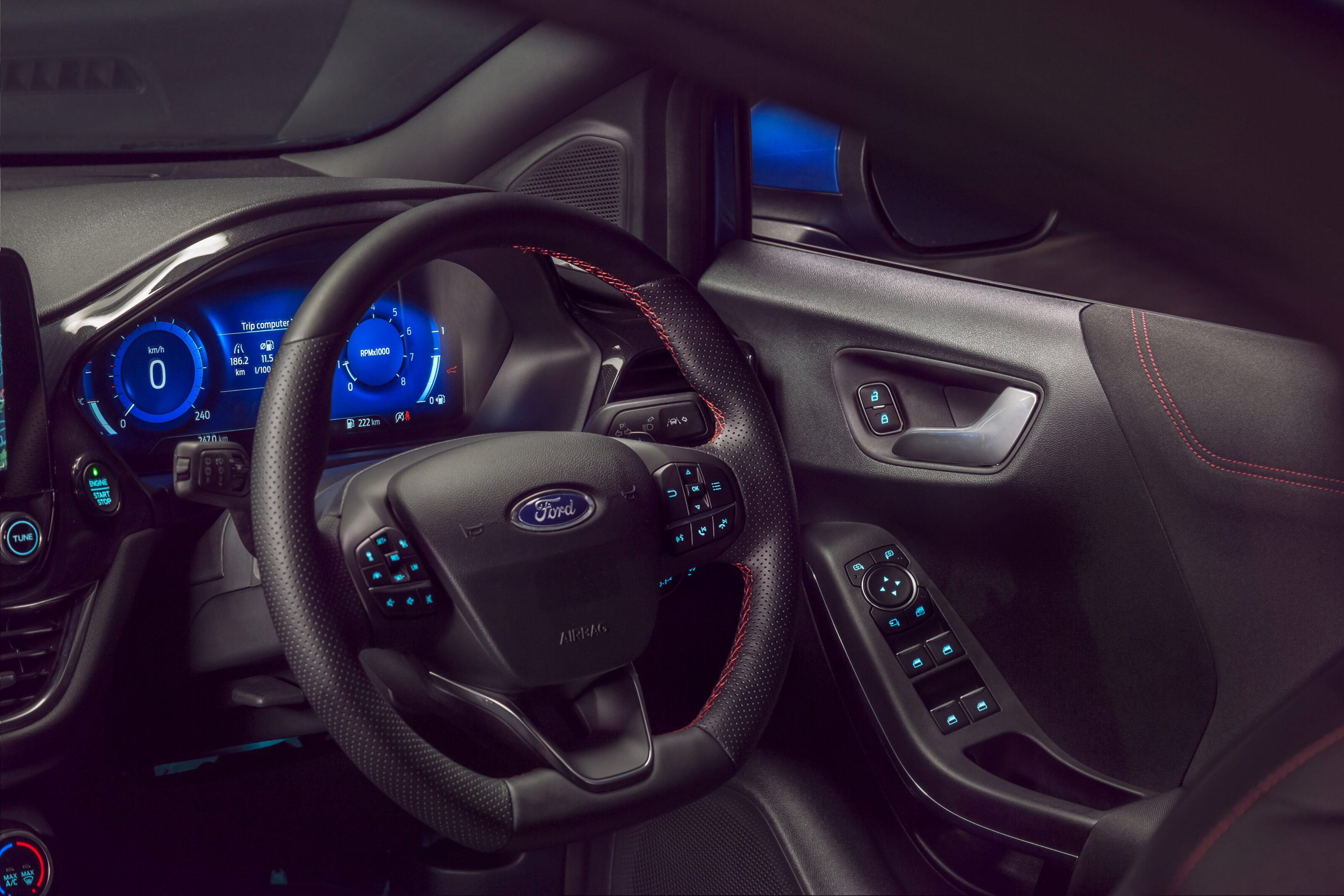
In the cabin, the leather driver’s seat is comfortable and well-bolstered, and all the primary touch points are nicely finished. The dash sports a leather-look, with a carbon accent in the middle, though there are some hard, cheaper-looking plastics that are visually obvious and in places that will occasionally be touched, like the doors and centre console.
Leather on the steering wheel is also welcome, and the layout itself is fairly simple and inoffensive, if a little conservative. Cupholders sit surrounded by the handbrake, drive controls like the mode select and TCS button, and the centre console storage, so they’re a little bit awkward to reach down to if you’re driving.
While the Puma’s seating position does have the advantage of a relatively commanding view of the road, the dash and window lines around the car are also a little high. This helps form that high-riding ‘hatchback’ look from the outside but does little for awareness of the Puma’s corner points, and rear-seat passengers can feel a little hemmed in.
The HVAC controls and infotainment screen on the centre of the dash are all very easy to use from an ergonomic perspective, and Ford’s SYNC software for its 8.0-inch touchscreen is among the simplest and most straightforward to operate. Any issues or personal preferences users might have can be bypassed by Android Auto or Apple CarPlay, though plugging in a phone is hard while it’s in the narrow wireless charging cradle.
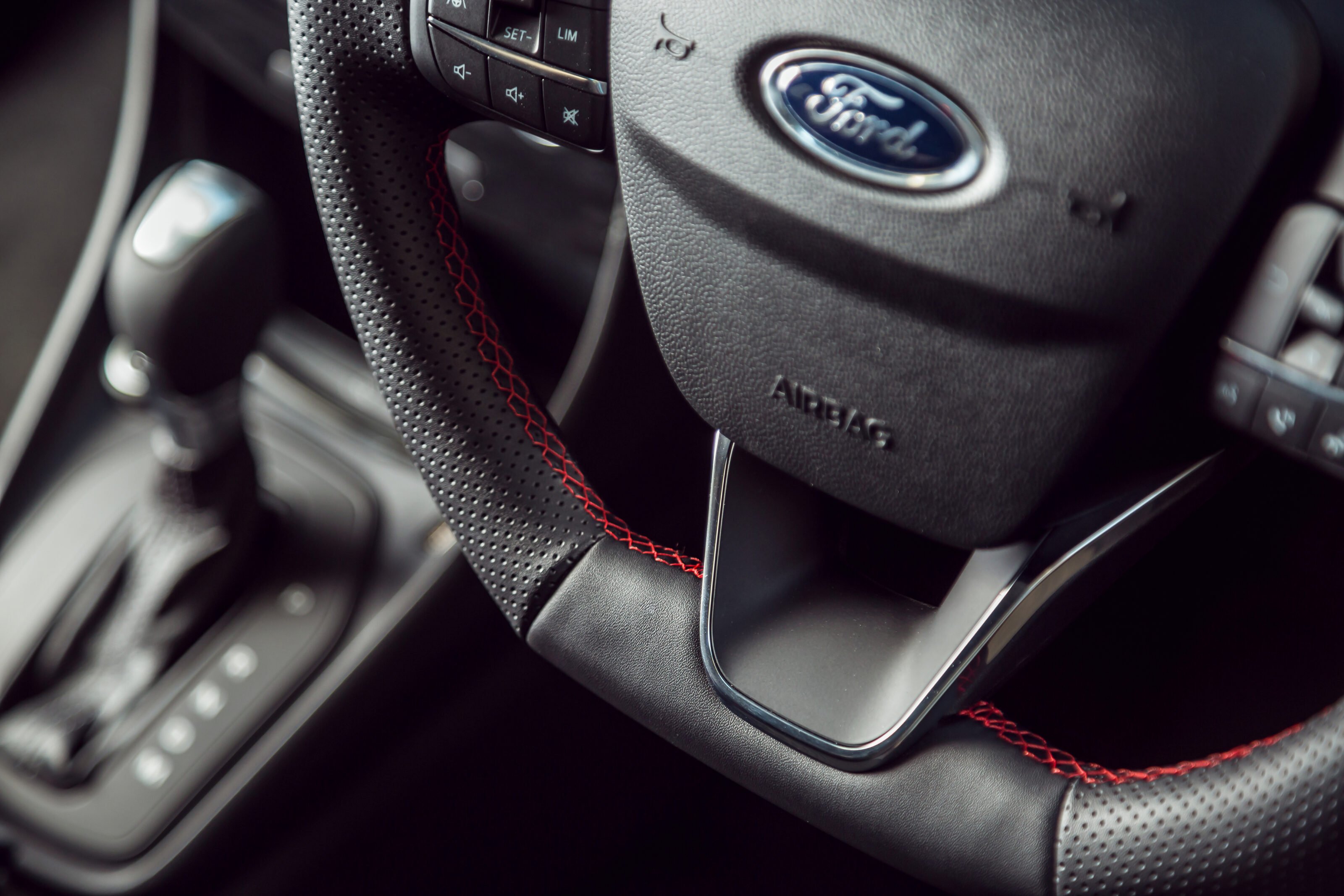
Where the front seat is a pleasant environment, the rear seat suffers. Headroom isn’t great for adults, though it’s just adequate for anyone nearing 6-feet-tall. And the seat itself is a little too flat to settle into comfortably. There are also no AC vents, no centre armrest, and no outlets for devices.
There’s also a laughable cupholder in each door, and netting for ‘storage’ on the backs of the front seats. It’s not the kind of place an adult would be comfortable for very long, but the smallish space in the back seat comes with an advantage further back…
The 410-litre boot (up to the luggage cover) is one of the largest in this class (the ever-popular CX-3 has just 264 litres), and there’s an extra 80-litre storage space under the floor perfect for wet or dirty clothes. You also score an electric-close tailgate and the rear seats fold down 60/40 for a total luggage space of 1170-litres if needed, enough to fit a mountain bike for example.
But of course, any Ford with ST-Line on its badge should double as a fun drive, right? The Puma name goes back to a sporty styled coupe from the 1990s, and the Fiesta platform the Puma is built on has plenty of talent potential.
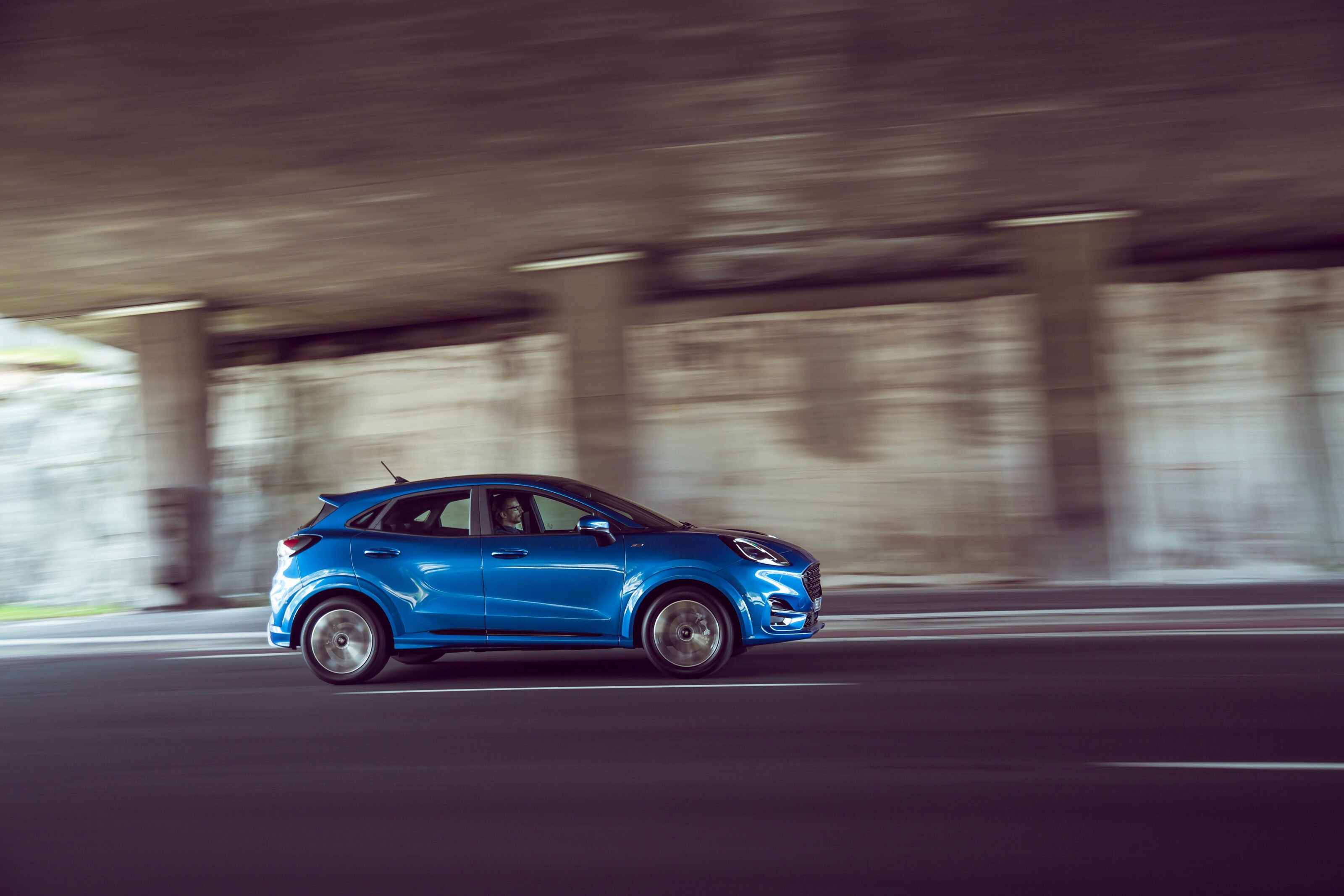
Starting up the Puma reveals a three-pot purr with a bit of a raspy character. The advantage of the diminutive engine is that its 5.3L /100km fuel consumption claim is actually not too far from the truth. A Wheels long-term test of the same drivetrain in the Puma ST-Line saw a 6.9L/100km figure returned after a little over 5000km, with plenty of deliberate test driving included. We’d expect most daily drivers to best our consumption rate.
The cooperation between engine and gearbox is one point where the Puma feels slightly off at low speeds. The 7-speed dual-clutch sometimes feels a little hesitant and cuts into the car’s momentum, while the turbocharger builds to a burst of torque. These characteristics can be worked around quite easily on a regular drive, but after some time in city traffic become a little tiresome.
This isn’t to say the Puma ST-Line V is fast – it isn’t, though its outputs from a 1.0-litre engine are impressive – but it does feel like it’s trying to feel sporting at the expense of smooth acceleration. The other aspect of the Puma’s sporting focus that can perhaps be a little much is its suspension, where the stiffer sports tune of the ST-Line keeps the driver aware of just how rough the road below is.
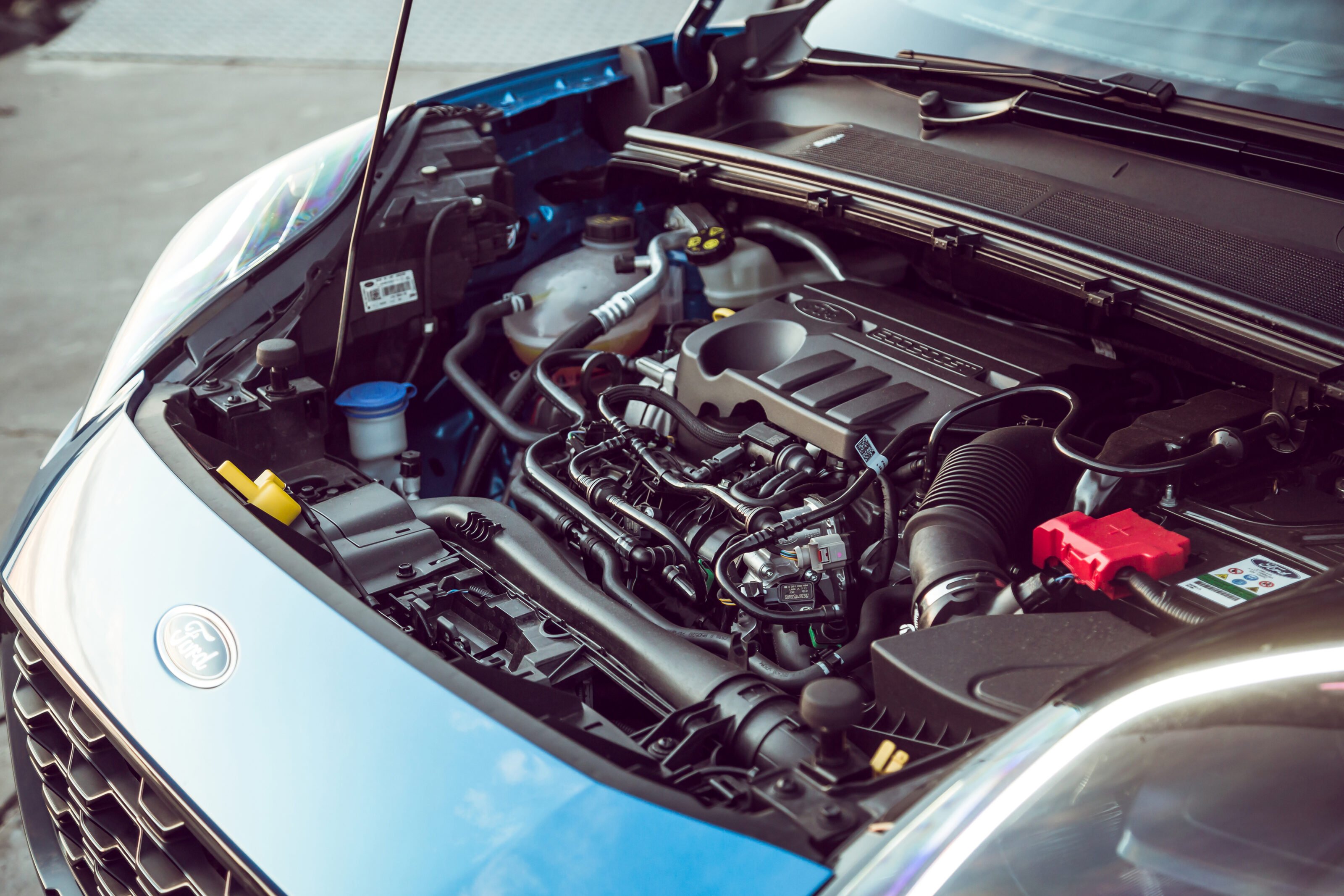
Once you have a good, relatively fast road ahead of you the Puma is a standout in terms of dynamics. Suddenly, through fast backroads, the Puma’s suspension isn’t a worry and its accurate steering is evident. Its chassis is playful and easy to control, too. The engine, though again not particularly powerful, is able to provide useful urge when it’s needed, though powering out of a corner after a slow turn can be a little frustrating.
Despite its mild flaws as a city SUV, the Puma is a playful and unintimidating car to hustle through country roads. The question is, if that doesn’t appeal to you, is it worth living with the slightly firm ride day-to-day to reap those benefits?
It’s difficult to justify the stretch from base Puma to ST-Line if the sharp driving dynamics don’t matter to you. The Mazda CX-3 can be had cheaper with a Euro-inspired interior quality, or even a more premium Euro in the Peugeot 2008 can be had.
But for keen drivers intent on the compact SUV life, the Puma ST-Line V’s shortcomings shouldn’t be deal breakers. It’s well equipped and fun to drive, making it the pick for anyone who intends to pedal their city SUV on some windy back roads on the weekend.
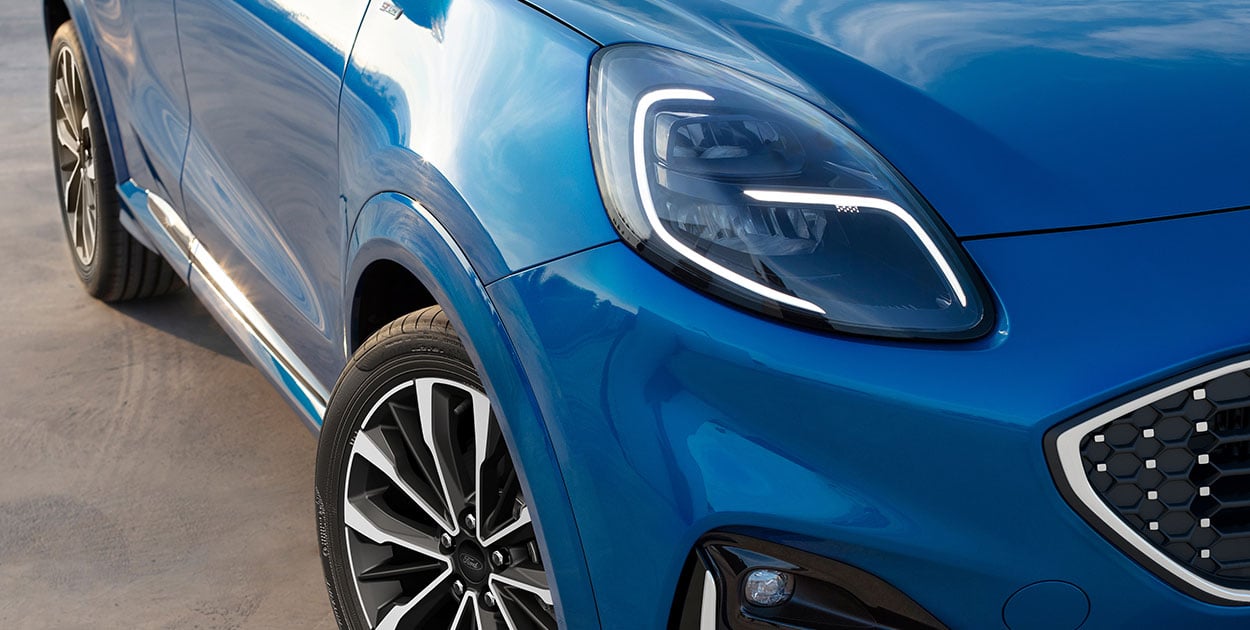
Ford Puma ST-Line V specifications
Body: 5-door, 5-seat SUV Drive: FWD Engine: 999cc 3-cyl, 12v turbo-petrol Power: 92kW @ 6000rpm Torque: 170Nm @ 1500-4500rpm 0-100km/h: 9.0sec (claimed) Fuel consumption: 5.3L/100km (combined) Weight: 1291kg Transmission: 7-speed DCT Suspension: MacPherson strut/torsion beam axle L/W/H: 4186/1805/1550mm Wheelbase: 2588mm Tracks: 1562mm/1567mm Brakes: Front ventilated discs/solid rear discs Tyres: 215/50 R18 Price: $35,540
Score breakdown
Things we like
- Packed with goodies
- Playful dynamics
- Fuel consumption
Not so much
- Ride errs on the firm side
- Second-row ambience
- Expensive compared to rivals
We recommend
-
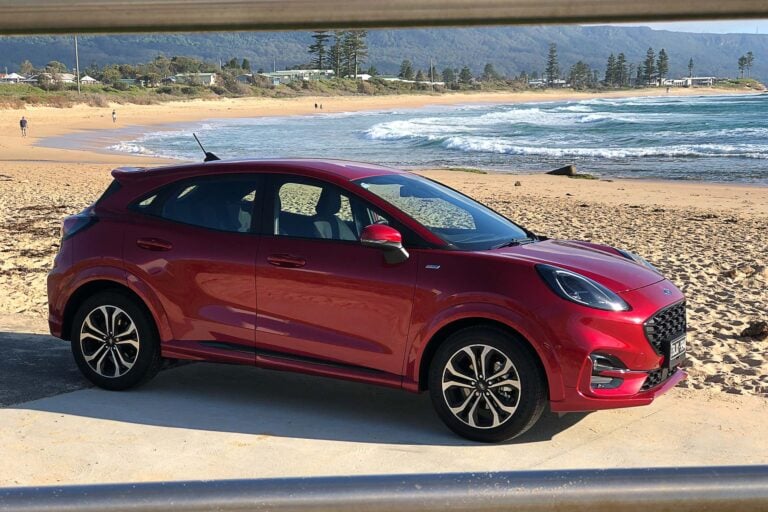 Reviews
ReviewsLong term review: Ford Puma ST-Line
Ford’s feline-esque small SUV joins the Wheels fleet, and there’s a lot riding on its small shoulders
-
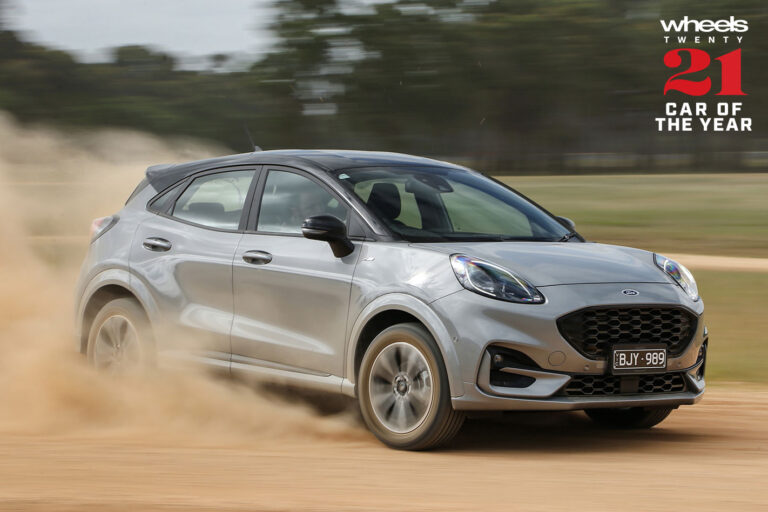 COTY
COTYFord Puma at Car of the Year 2021
Puma fizzes with energy, just not enough to reset benchmarks
-
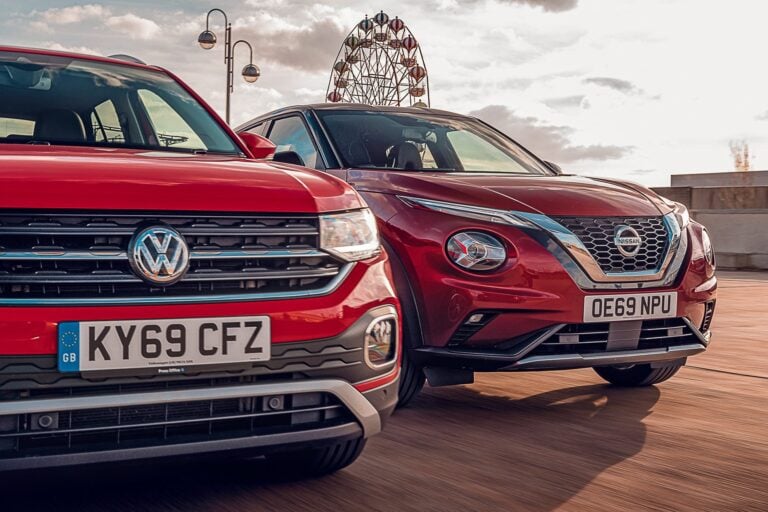 Reviews
Reviews2020 Ford Puma vs Nissan Juke vs VW T-Cross compared
We test three incoming compact SUVs en route to Australia; the Nissan Juke, Volkswagen T-Cross and Ford Puma


